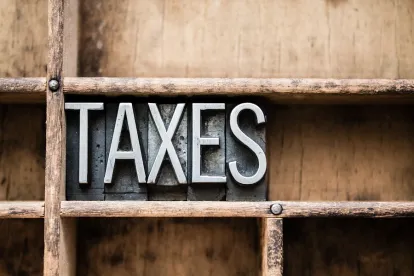November is approaching and in an election year, that means candidates are making plans and promises. These promises and plans inevitably include something about taxes; and when it comes to taxes, it pays to be prepared. While we take no position on the candidates or proposals, in the event you are considering the timing of your tax decisions for the balance of the year and 2021, it is important to consider the potential impact of the election. The following items explain the current status of various tax proposals that might impact your planning.
As the presumptive nominee of the Democratic Party, the tax proposals of former vice president Joe Biden warrant attention, and this post focuses on those proposals. At this stage of the election, these proposals are mostly in the form of sound bites with few, if any, of the details flushed out. Nevertheless, if enacted, they could have a significant impact on tax planning.
Biden’s proposals center around the stated objectives of making the tax code more progressive and equitable and reducing barriers for families to qualify for tax breaks.
Key elements of Biden’s tax proposals for individual taxpayers include:
-
An increase of the top tax bracket of individuals from the current top rate of 37% back to 6% (the top rate prior to the 2017 Tax Cuts and Jobs Act) for taxable income above $400,000.
-
An increase of the tax rate on long-term capital gains and dividends from 20% to 6% (almost double!) on income above $1,000,000.
-
Eliminating the basis step up at death of inherited property.
-
Increasing social security taxes on high earners by imposing social security taxes on income over $400,000. Currently the 12.4% social security taxes on earnings max out when income reaches $137, 700. The proposed increase would create a ‘donut hole’ for income earned between the current maximum of $137,700 and $400,000. Income in that range would not be subject to social security taxes. An addition 12.4% social security tax (with the employer paying the 6.2% of those taxes), would kick in for all income over $400,000.
-
Restoring the pre Tax Cuts and Jobs Act limitation on itemized deductions for taxable income above $400,000. That limitation capped the amount of itemized deductions a taxpayer with income over a certain threshold could take for things like charitable donations. It was removed at the same time that the limitation on the deduction for state and local taxes was enacted.
With a possible increase in the highest tax bracket for individuals earning over $400,000 and an increase in the capital gains and dividends rates for individuals (with income over a $1,000,000), taxpayers who are anticipating generating income or gains in the near future may wish to enter into sales and other transactions before 2021. Corporations may want to consider paying dividends in 2020 rather than later, and employers may wish to consider paying end-of-the-year bonuses to its high-income employees in 2020 rather than waiting until after the new year.
Elimination of the basis step-up at death has been frequently proposed by legislators seeking to raise revenue but never enacted. Given the unpopularity of the proposal, it seems unlikely to pass unless significantly modified by, for example, creating a high-income threshold below which the basis step-up would still be allowed. Eliminating the basis step-up would create a number of complications, in part because a significant amount of family tax planning relies on the basis step-up rule. Further, in many cases it will be difficult to determine the historic tax basis of property acquired by the deceased years ago. Such a change in law would likely result in major changes in tax planning as individuals tend to hold on to property until death allowing their families to sell the property with no taxable gain.
Key elements of Biden’s Tax proposals for businesses include:
-
An increase of the corporate tax rate to 28% (up from the 21% rate it has been since 2018 but still lower than the 35% rate that applied in 2017).
-
Creating a minimum tax on corporations with book profits of $100 million or higher.
-
Removing the Section 199A 20% business deduction available since the 2017 Tax Cuts and Jobs Act to businesses not subject to an entity level tax (e.g. sole proprietorships, partnerships S-corporations and real estate investment trusts). The Section 199A 20% deduction is currently available against income from a qualified trade or business (subject to a number of limitations including, in some cases, the amount of wages paid by the business). The 20% deduction was intended to provide relief to businesses not operating in corporate form similar to the 2017 reduction in tax rates for corporations from 35% to 21%.
-
Increasing the 10.5% global intangible low tax income (“GILTI”) tax on the un repatriated low-tax earnings (over a certain threshold) of the foreign subs of U.S. corporations to 21%.
-
Establishing a Manufacturing Communities Tax Credit to reduce the tax liability of businesses that experience workforce layoffs or a major government institution closure. While the details are unclear, this may include a tax credit for businesses that renovate or modernize existing or recently closed manufacturing facilities.
-
The expansion of the New Markets Tax Credit and making it permanent. The New Market Tax Credit provides a tax credit to equity investors in designated low-income communities.
-
Making tax credits available to small business for adopting workplace retirement savings plans.
-
The expansion of several renewable-energy-related tax credits and deductions
-
Ending subsidies for fossil fuels.
In anticipation of an increase in the corporate tax rate, corporations may wish to consider ways to accelerate income to years prior to a possible rate increase. Corporate sellers will have an incentive to close transactions before 2021, and may want to reconsider income-deferral transactions. Partnerships, sole proprietors, S-corporations and real estate investment trusts that have taken advantage of the Section 199A 20% deductions should consider ways to take advantage of those deductions while they are still available. The expansion of the new market tax credits and renewable energy credits will be a boon to companies operating in those markets. An increase on the GILTI tax may reduce some of the incentive for corporations with foreign subsidiaries to operate in low-tax jurisdictions although the GILTI rules have already been criticized for penalizing activity that is not abusive.
Conclusion
There is, of course, much that has to happen before any of these proposals could be enacted (an election to be won for starters) and it is extremely unlikely that any of these changes would be retroactive to a year prior to the year of enactment. Further, it is unclear how quickly a new administration could enact such changes. If Biden were to win the election he would still need support in both the house and senate for any of these changes to be made. It is still early times and these proposals are likely to be modified, expanded and in some cases dropped. Still, taxpayers should keep these proposals in mind when considering selling property, engaging in family tax planning, paying a dividend or making investment decisions.



 />i
/>i
